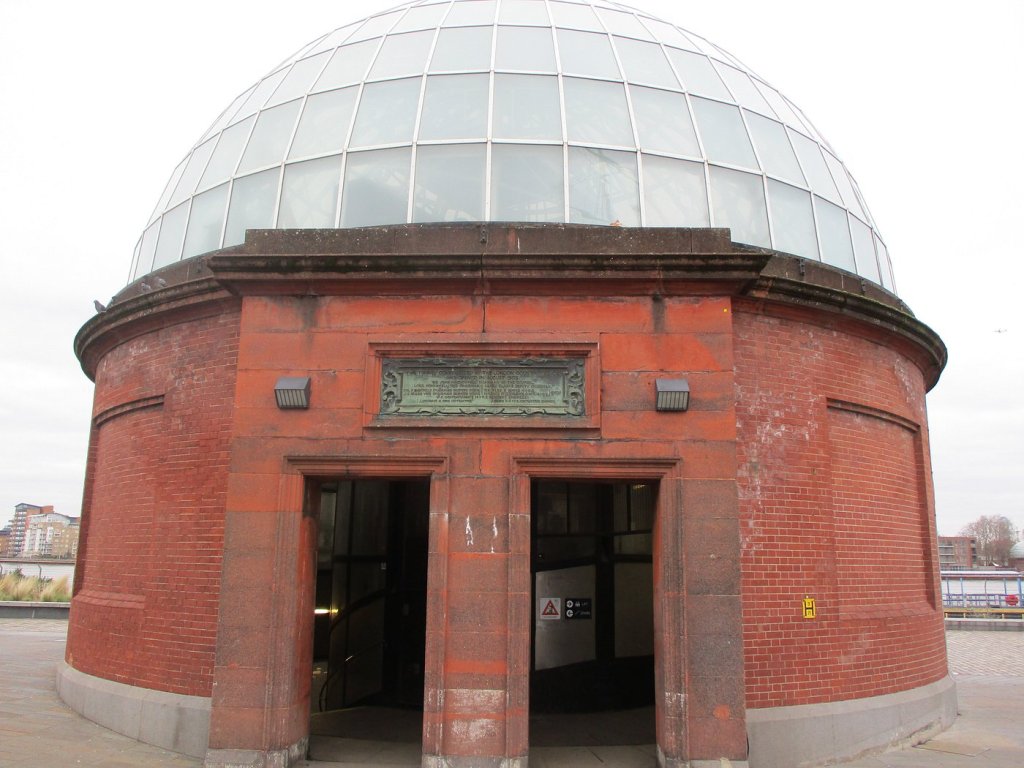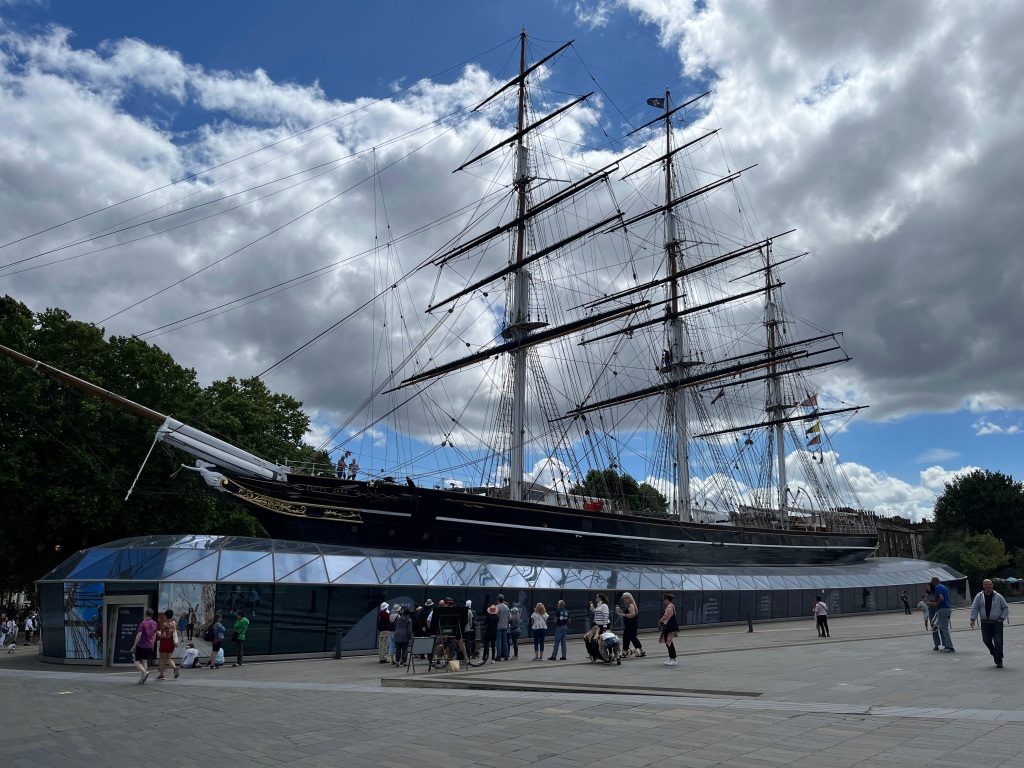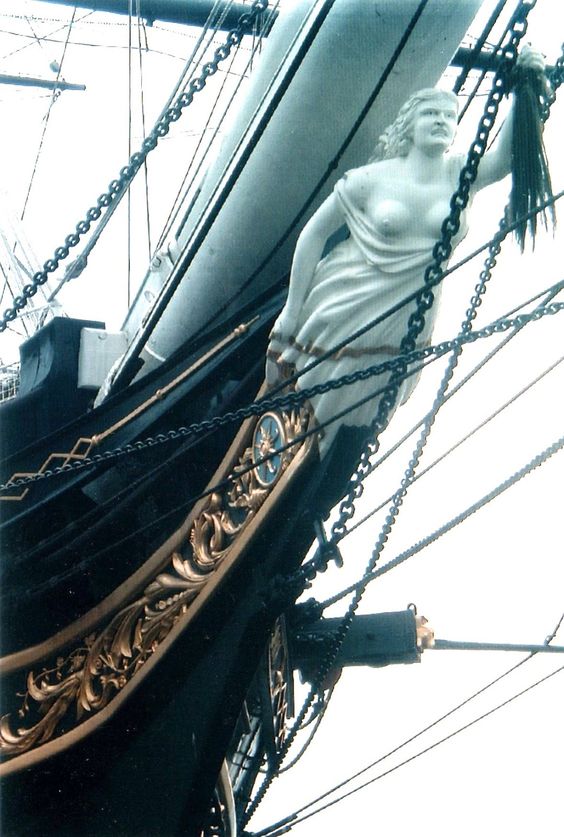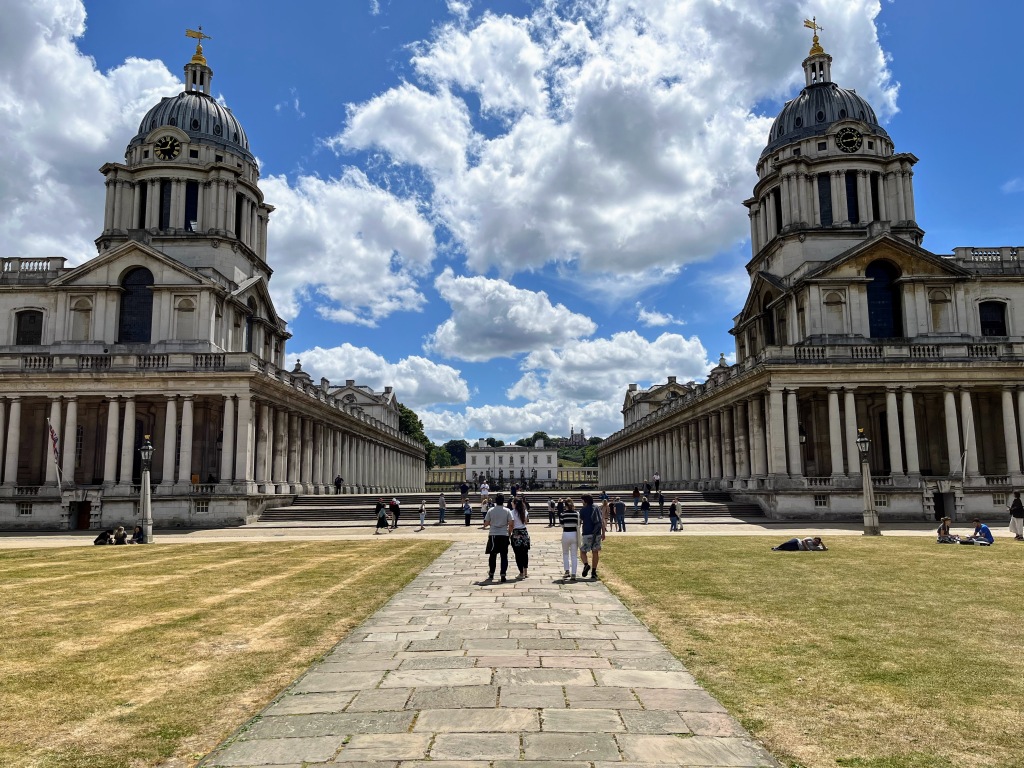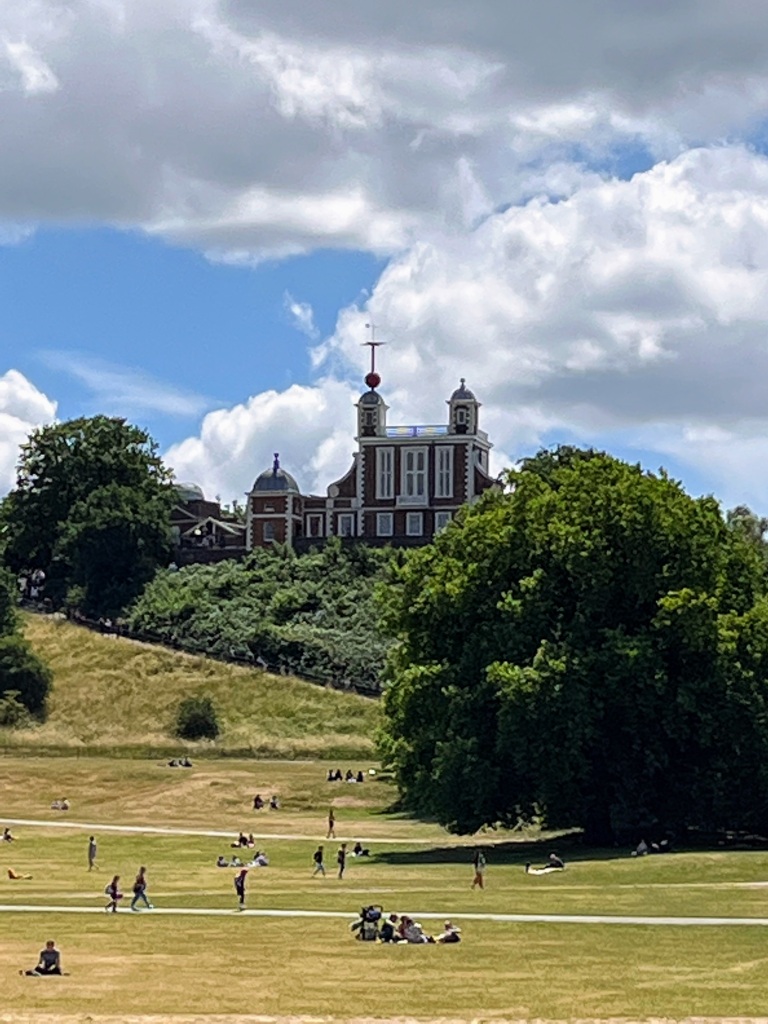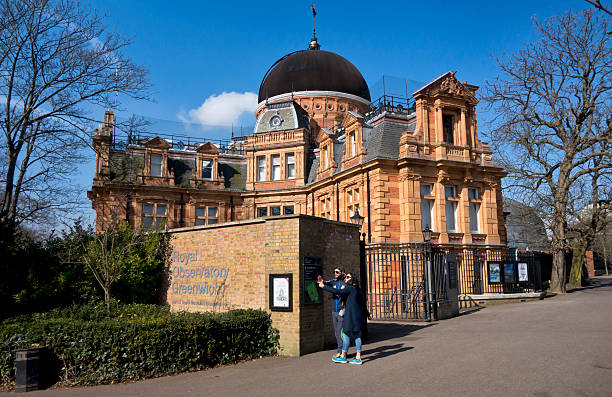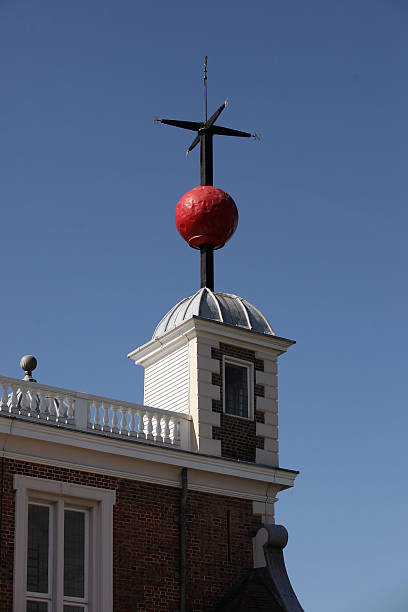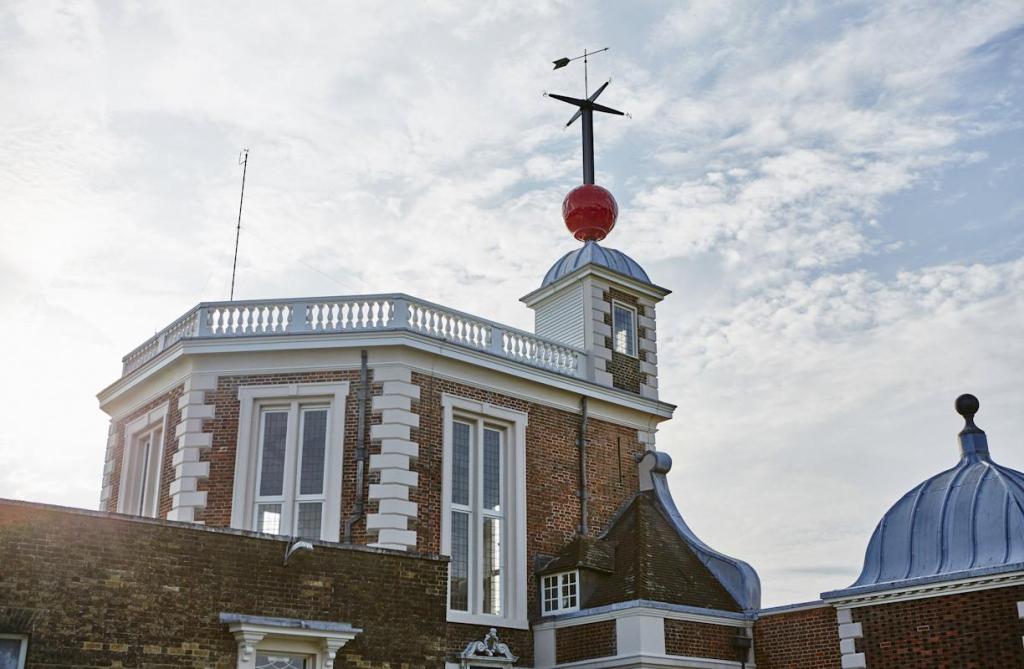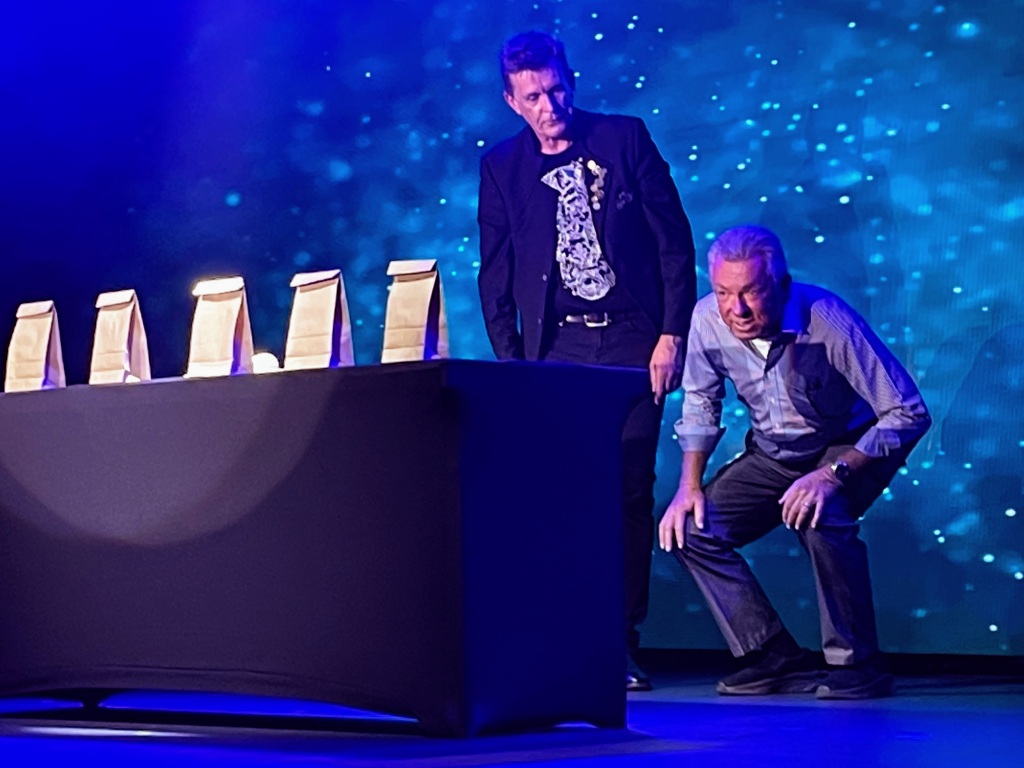June 26, 2022
Greenwich, England
Greenwich, England served as a key location for Royals for more than 500 years and they have the historic buildings and stories to prove it. We covered a lot of ground in our 2-1/2 hour walking tour and learned more than I have time/room to share, but below are some of the highlights.
First, an interesting bit of trivia. Greenwich is located along the River Thames (pronounced Tims). What I didn’t know is that a portion of the River Thames is tidal. I didn’t even know it was possible for a river to be part tidal and part not! In the case of the River Thames it dumps into the North Sea, and approximately 99 miles of the 215-mile river are tidal, including the portion that passes past Greenwich. This means the height and depth of the river fluctuates, making bridges problematic. Greenwich has solved this problem by building two-foot tunnels that run under the river! I’ve included a photo that includes the entry to a tunnel on one side of the river and the entry/exit on the other side. Originally built in 1902 and 1912 to accommodate 15 shipyard workers, the tunnels now see an average of more than 1.5 million visitors a day. The tunnels are strictly pedestrian – you can’t even ride a bike or scooter through them. Now on to the sights!
One of the first things you see as you approach the docks of Greenwich is the huge Cutty Sark clipper ship positioned on a massive slab of concrete. This is the world’s only surviving extreme clipper. Built in 1869 for the China tea trade and expected to last thirty years at best, this 150-year-old masterpiece made it fifty-two years as a working ship, was then used twenty-two years as a training ship and has served the last sixty years as a museum. More than ninety percent of its hull is original construction. During its time as a merchant ship, it visited sixteen different countries and traveled the equivalent of two-and-a-half trips to the moon in back. In its first 7 years alone this ship hauled more than 10 million pounds of tea from China to the U.K. Clipper ships have 3 distinctive design characteristics: a long narrow hull; a sharp bow that allows it to cut through waves rather than riding atop them; and 3 raking masts (masts that angle forward from a straight vertical). They were the fastest ships of their day. The opening of the Suez Canal marked the end of the line for sailing ships in the tea trade, so Cutty Sark moved to hauling other goods, such as coal and wool.
Cutty Sark gets her name from a Robert Burns poem that tells the story of a man being wooed by a scantily clad beautiful young witch in a tavern. The witch uses all of her womanly wiles on the man, but he refuses to be charmed and runs away on his horse. Being a witch, the woman is able to fly after him, but the man’s horse is faster and all she is able to capture is a handful of the horse’s tail as the man rides out of sight. The woman is wearing a small nightshirt, known as a Cutty sark. The figure head on the bow of this particular clipper is a woman with her breasts hanging out of her nightshirt and a fistful of horsehair hanging from her clenched fist, hence the name.
As we made our way through the outdoor market to Royal Park we passed by the Royal Maritime Museum, home to Nelson’s Ship in a Bottle. This piece of art was originally created for a temporary display at Trafalgar Square. When its time there expired, its cultural significance led the Museum to purchase it. The monument is meant to be a replica of the ship of Britain’s most famous Admiral, Horatio Nelson. The cloth used for its sails represent the fabric stolen from the African countries by the Dutch during the Colonial era (or that Nelson and his crew bought to repair torn sails, depending on the person telling the story). It also reflects London’s cultural diversity as a result of European expansion.
We visited the Queen’s House, so named because – you guessed it – many queens lived there! Legend has it James I of England gave the land the home is built on to his wife as an apology for swearing at her in public – two things a King was never to do (swear and humiliate his wife in public). One could argue that he was unfairly provoked; after all, his wife had just accidentally shot and killed his best hunting dog. But rules are rules, and the queen graciously accepted the apology and immediately went about building a statement piece of architecture as her new home. Unfortunately, the queen died shortly after construction began. The king soon remarried and gave the house to his new bride who become the first of many queens to live there, earning the home its name.
Finally, there was the Royal Observatory, perched high above it all. The Royal Observatory was originally located at the Tower of London, but there was a problem with the birds. Astronomers like to use outdoor telescopes to observe the nighttime sky; birds like to make deposits on outdoor telescopes…you see the problem. The Royal Astronomer asked the King to remove the birds, but those of you who read yesterday’s post know that that was not going to happen (legend has it that if the Ravens are removed from the Tower the monarch will fall), so instead the King offered him the choice piece of real estate just above the Queen’s House. Perfect.
The Observatory functioned as both a home and the Royal Observatory for nearly 300 years. Between them, the first two Royal Astronomers plotted all of the visible stars in both the northern and southern hemispheres, and in 1884 it became the location of the Prime Meridian of the World, which separates the eastern and western hemispheres of the world and serves as the International Date Line, the boundary from which each calendar day starts. The Observatory is also home to the first public symbol of time. Long before the Prime Meridian and International Date Line sailors relied on the Observatory to help them set their watches and know when to set sail. Using the position of the sun and other measures, astronomers would calculate exactly when high noon occurred. They would then hoist a giant ball to the top of the mast on the roof of the building and begin dropping it. This took a bit of time, so instead of signifying high noon, the ball was dropped at precisely 1:00 p.m. This helped sea captains set their chronometers, a precision timepiece carried on a ship used in determining the ship’s position by celestial navigation. Originally begun in 1833, this tradition continues today.
We managed to learn all of this AND pack in the new Elvis movie before returning to the ship to get cleaned up, toast our 17th wedding anniversary and join Kathy and Keith for dinner. To top it all off Ken got to assist in the magic show we attended afterward. Great day!
